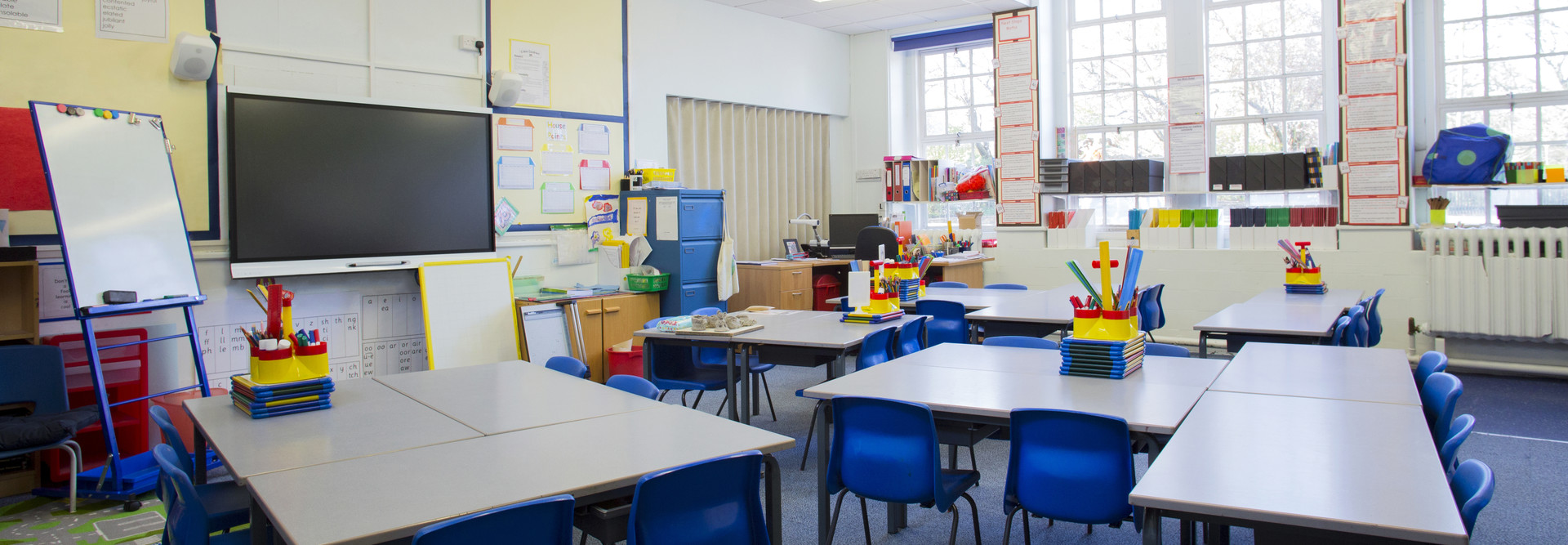7 Tips for Redesigning Your Learning Space
As educators, we’re in the midst of preparing students for a fundamental shift in the nature of work that includes increased reliance on technology, automation, digital platforms and artificial intelligence.
However, the look and feel in many of our schools has not changed in more than 100 years. Consider these seven tips for redesigning your learning spaces:
SIGN UP: Get more news from the EdTech newsletter in your inbox every two weeks!
1. Involve Students in the Design Process
First, you should have a conversation with students about where they like to learn and why. You’ll be amazed how insightful students are when it comes to redesigning learning spaces.
After all, we’re designing the spaces according to the needs of our students. This is not a contest to see who can post the coolest pictures of their classroom.
2. Think About Student Experiences, Not Furniture
Ask yourself these questions before you begin:
-
What are the desired student experiences and learning outcomes? Write them down and consider how the space redesign or furniture upgrade will amplify the teacher’s ability to provide them.
-
How will you measure success? More times than not, schools are starting small with one or two classrooms, maybe a library or old computer lab. By measuring how the redesign impacts learning outcomes, you’re making a business case as to why the district should continue investing in future redesign projects.
-
What is your plan to provide the necessary professional development/learning for educators working in your new spaces?
3. Avoid Groupthink by Focusing Solely on Your Space
Forbes explains that groupthink occurs when a team or organization becomes so similar in their outlook that they lose the ability to be creative in their decision-making.
Redesigned spaces also should cater to your classroom/school’s needs, so copying another learning space may not give your classroom/school the desired results. A learning space design should be near completion before leaders visit other schools.
4. Make Removing the Front of the Classroom a Priority
As mentioned above, one of the goals of redesigning spaces is providing experiences and learning opportunities that weren’t previously possible.
In many conventional classrooms, the front of the classroom is used for direct instruction and it contains a large interactive display or projector. However, progressive and innovative schools are opting for multiple non-touch flat-screen TVs around the classroom.
This approach empowers the teacher to implement the station rotation model of blended learning and greatly increases the collaborative nature of the space, making it conducive to problem- or project-based learning.
5. Understand the Meaning of Space Vocabulary
This vocabulary must be shared among all classroom stakeholders:
-
Flexible: The space can be reshaped.
-
Agile: The space can be reshaped quickly.
-
Intentional: The space is designed to support the student learning experience.
-
Adaptive: The space adapts to changes in the expectations of the student learning experience.
-
Technological: The space supports a variety of technologies.
-
Interconnected: The physical and digital spaces for learning are connected.
6. Declutter the Classroom and Use Invigorating Colors
Reclaim your walls as learning surfaces. Too much stuff on the walls can lead to cognitive overload and be distracting for students.
Walk into a modern workplace, such as a Google or Microsoft office, and you’ll find clean lines and warm colors. Opt for an accent wall with a calming green or orange that evokes creativity.
Colors activate various regions of our brain. These regions of our brain influence how students feel when sitting in a learning space. The way our students feel affects how they learn. Colors matter.
7. Ditch Traditional Teacher Spaces
Often lovingly referred to as the teacher bunker, the average teacher space takes up a whopping 25 percent of the classroom. If possible, move your files to the cloud and sell your file cabinets.
Besides, redesigning your space requires a shift in instructional practice. Odds are those old lesson plans in the file cabinet won’t work in your modern new workspace anyway.
This article is part of the "Connect IT: Bridging the Gap Between Education and Technology" series. Please join the discussion on Twitter by using the #ConnectIT hashtag.
![[title]Connect IT: Bridging the Gap Between Education and Technology [title]Connect IT: Bridging the Gap Between Education and Technology](http://www.edtechmagazine.com/k12/sites/default/files/articles/2014/05/connectit.jpg)









